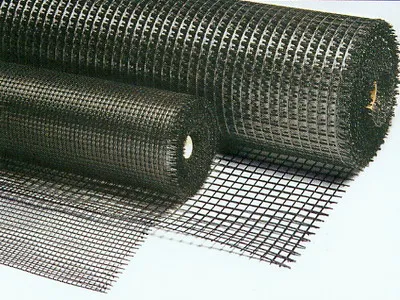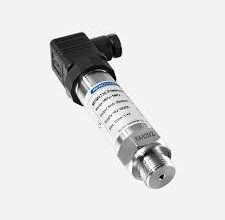Geosynthetics: Techniques for Improving the Ground

What exactly is Ground Improvement?
Ground improvement or ground modification refers to changes made to site foundation soils or project earth constructions in order to improve their performance under design and operational loading conditions using geosynthetics.
Ground repair is required when poor soil conditions are encountered. Instead of excavating and completely replacing the bad soil, it is often more cost-effective to simply treat the soil that is already there.
Subsurface characteristics that are detrimental to a project may necessitate avoiding the site, changing the proposed construction design, removing and replacing unacceptable soils, or attempting to adapt the existing ground if possible.
Many projects require improvements to geomaterials and geotechnical conditions.
The Goal of Ground Improvement
A common goal is to increase the carrying capacity of the ground and reduce soft ground settlement. Ground improvement can also be used to prevent seismic liquefaction and stabilize excavation bottoms.
Ground Improvement Principles using geosynthetics
Column-type ground enhancement techniques are increasingly being used in the construction of road and rail embankment buildings. Geotextile-encased columns (GEC) are also used to construct dike foundations.
These strategies are designed to relieve pressure on soft soils while preserving the soil’s structure. Geotextile or geogrid reinforcements are commonly used to create a load-transfer mat on top of a grid pattern formed by inserting column or pile-type structures into a bearing layer.
The embankment arch redistributes stresses and stabilizes the geotextile/geogrid reinforcement, resulting in stress relief for soft soils (membrane effect). The upgraded or composite ground can result in lower compressibility and increased bearing capacity and shear strength.
During the design phase, an increasing number of designers compare the design of a foundation with a traditional pile (or pile raft) solution and the option of using soil mix elements covered by a load transfer platform made of granular material reinforced with geosynthetics.
Despite the abundance of pile foundation design standards and recommendations, numerical modeling is frequently required to assess the combined solution’s safety (the soil mix elements and the load transmission platform) due to a lack of basic information governing the solution’s behavior.
What are the various methods of Ground Improvement?
Compaction grouting was deemed the best option for improving foundation soils because it does not cause any vibratory motions, making it ideal for controlling foundation movement.
Through compaction grouting, a low-mobility aggregate grout injected in phases through 100-mm diameter steel casings improves the soil. At each grout probe point, a drop-off conical tip must be attached with a percussion hammer to an inclined or vertical steel casing.
The grout volume and injection pressure are carefully monitored at each stage, while the steel casings are removed 0.3 to 0.6 meters at a time. Settlements are more common in vibratory densification than foundation heaves in compaction grouting.
Also Read: Everything About Construction Materials Needed for Building a House
When injecting grout less than 10 meters below ground level, pressure and volume are typically reduced to limit earth heaving and adjacent foundation heaving.
To improve the ground, compaction grouting was used, and the process was completed in stages as is customary. Prior to grouting additional holes, a variety of primary injection sites were grouted. Grouting began with the grouting of six main foundation holes and two extra holes near the foundation’s border.
The diameter of the in-situ grout columns is extrapolated from the grout quantities injected and ranges from 200 to 600 mm. Normally, it takes six days to complete the grouting of these first holes (i.e. 8 x 24 linear m of grout column). Slow progress is primarily due to a 24-meter casing penetration and extensive grout usage.
A production rate of 100 linear meters per day is considered typical in loose to compact sandy soils such as those found at the cold box site. Throughout this grouting phase, however, the tilt meters and measured settlements were frequently tiny (less than 5 mm).
Methods for improving coarse-grained soil
Compaction that is dynamic
When other methods cannot be used due to subsurface constraints, dynamic compaction is the preferred method. It is a method of compacting soil deposits to increase their mass.
This technique entails repeatedly dropping a heavy object on the ground at regular intervals. The greater the weight and height, the greater the likelihood of compacting. The weight employed to achieve the appropriate level of compaction ranges between 8 and 36 tonnes. The height range is from 1m to 30m.
Stress waves produced by the impact of free fall aid in soil densification. These stress waves have the ability to travel up to ten meters. In cohesionless soils, these waves cause liquefaction, which is then followed by compaction, whereas in cohesive soils, they raise pore water pressure, which is then followed by compaction.
Pore water pressure is the pressure of water within the pores of rocks and soils in geology (PWP).
The weight of the hammer, its height, and the spacing of the hammer drops all have an impact on how compressed the material is after the impact. When the first weight is dropped, the depth of penetration increases.
The deeper layers are compacted first, followed by the topsoil to seal in the newly compacted material.”
Innovative Techniques for Improving Fine-Grained Soil
The Stone Column
In order to improve the structural integrity of poor soils, a vibrator is used to build highly compacted columns of gravel or similar material. As a result of the displacement process, all soils in the treatment zone are strengthened, and neighboring granular soils are deepened.
Because of space and timing constraints in infrastructure buildings, less-than-ideal soil conditions may be required.
The expertise of a geotechnical engineer can greatly improve soil conditions. The type of ground improvement technique used will be determined by the stratum and the goal of the improvement.
In a variety of situations, ground renovation with stone columns is a proven and cost-effective method. Make a stone column out of various compositions to see which one provides the earth with the most sturdiness.
I hope this post has given you a good understanding of the Ground Improvement Process, its goal, and its methods. Feel free to call us for geosynthetics products at +91 9081800664. Please do not hesitate to like, comment, or share it.




